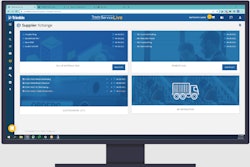Creating the mindset for successful transformation
Wholesale distributors are being bombarded with news about digital technology and the benefits of deploying a digital strategy. Yet, experts’ well-intended advice often lacks clarity and the practical insights necessary for turning a theoretical plan into sustainable reality. Investing in technology alone is not enough. Distributors launching a digital journey need to also consider how to create a company culture which will help drive and energize a new way of thinking.
Defining transformation, from top to bottom
Digital technologies are often called disruptive technologies or transformative. These labels convey the broad scope and deep impact that can come from revamping processes and leveraging data from products, customers, and networks. Introducing new data-centric revenue streams and monetizing value-added services also make the transformation far-reaching and game-changing. The old-school distribution businesses are being replaced by modern, efficient organizations which intimately know their customers, their needs, and preferences as well at the product lines being sold. It’s a new day.
The company culture is a pivotal element in success.
Understanding the risks
Any large-scale deployment, when not managed well, can be complicated by a resistant workforce. A few vocal naysayers in the organization can cause negativity to quickly spread through the ranks. Frustration, fear of job security, or lack of understanding can cause minor complaints to escalate. If left to fester, soon uncooperative personnel and interdepartmental disputes can interfere with team building.
Fortunately, these are extreme examples, and the opposite, extremely positive viewpoints are also possible.
The benefits of creating a positive company culture
Distributors launching a digital plan also need a new perspective, a totally new way of looking at business opportunities. This calls for a company culture which embraces change, values new technologies, and rewards personnel for innovative ideas and creative problem solving. These elements cannot be bought, installed, and switched on. A company culture is more innate, a set of values and priorities, a vision-centered approach to interacting with colleagues, suppliers and customers. It originates at the top as chief officers lead by example.
Getting it right is critical
Digital technologies provide the opportunity to re-align and build new relationships. It’s like a re-boot in the computer world, a do-over in a children’s game, or a mulligan in golf. Whether you are a distributor focusing on consumer goods, industrial equipment, or building materials, you have already seen mergers and acquisitions shake up the landscape. Some distributors are shifting focus, trying to specialize in certain verticals or round out product lines with value add programs for certain audiences, like HVAC or restaurant supplies.
These shifts and fast pace of change sweeping the global wholesale and distribution industry will continue to escalate. More and more companies—your competition--will ramp up innovative service offerings and new data-centric revenue models. To keep pace, you need to evolve as well. You need a workforce which shares top management’s vision for “the new you” and your distinctive differentiators. Whether the focus is engaging with customers or monetizing sensor-generated data, the workforce must understand the new principles, grasp the motivation, and be trained to execute to the new processes.
Having a highly engaged workforce, top to bottom, will go a long way in making your evolution run smoothly. Enthusiasm breeds acceptance. Momentum builds. Soon, you have a highly successful program which employees are proud to get behind.
Deeper dive into what company culture means
The company culture has many components and can range from attitudes toward diversity to perceptions around compensation and benefits. The issues related to the digital evolution for a distributor, though, are often topics new to the company, with no easy answers. They can include risk acceptance, relationships with customers, ownership of data, and the value of innovation and problem solving.
Let’s look closer at some of the elements of a digital-ready company culture in distribution and why these characteristics are so important.
Customer experience. Relationships are the lifeblood of a successful distributor. As customer buying cycles and decision points evolve, your employees must be able to evolve methods of communicating with customers, obtaining feedback and encouraging engagement about new offerings and services. New portals, collaboration tools, ecommerce platforms, and data sharing will all be part of the new future. For employees, understanding priorities as they relate to customer service is essential. How far should each employee go to make sure the customer is happy?
Eliminating silos. Digital tactics often cross multiple departments and involve teams from various places within the organization. So, breaking down departmental barriers is critical, one of the first tasks which must be tackled. Improving visibility is important. Cross-operational training and forming cross functional teams will also encourage team-thinking, rather than department or division exclusivity.
Accepting risk. Adopting a digital mindset means innovation. Innovation requires some degree of risk, as companies think out of the box and test untried concepts. Not all ideas will succeed without a hitch. Top management must communicate to team members that some failures are expected and there will be no reprisals. Fear of failure can lead to reluctance to suggest innovative concepts. Personnel need to understand what level of risk is acceptable and how to make the value judgements. Some guidance is needed so that reckless, high-risk decisions are avoided and a balance is achieved. Be sure to communicate the standards to employees and lead by example.
Creative problem-solving. Finding new ways to solve old problems is one of the hallmarks of a digital plan, especially as the distributor strives to create new revenue streams, new service offerings and new uses for data generated. When the workforce embraces the vision, employees will be more alert, looking for creative ways to solve old problems. This means employees must have tools for communicating ideas, ways to make suggestions, environments for brainstorming and saying, “What if we.…”
Detailed reporting. Creative problem solving also needs access to data around the problems or issues to be solved, such as frequent customer complaints or incidents of stock outs. Report writing and KPI tracking will be important capabilities to help personnel research contributing factors and craft solutions. Access to customer data and a view of the complete value-chain are other requirements that are helpful when researching causes of problems and proposing solutions.
Team building. In this digital era, a team approach is more important than ever. Cross functional teams will be required to address the type of large initiatives that are typically part of digital deployment. For example, speeding the order-to-cash cycle is a broad topic that can be addressed with a digital initiative. It may involve teams in sales, inventory, fulfillment, and accounting. Several individuals will need to review gaps in processes and identify ways digital networks and improved visibility can eliminate delays.
Sharing the heavy-lifting. Working as individuals, some of the enterprise-wide innovations that are part of a digital overhaul will be difficult to enact. Projects can be time intensive and interrupt normal workflows. It is important to avoid overburdening one team. A cross-functional team approach also disperses the burden across multiple personnel so one department doesn’t carry the full weight of an extra workload. When teams are assigned to work through digital issues, it also helps generate buy-in, making personnel feel like part of the solution.
Engaging employees at every level. A digital-ready company culture places heavy emphasis on involving the workforce at multiple levels, encouraging employees to make well-informed decisions and further drive the company initiatives. Personnel need guides(lines?) and parameters for decision making but without excessive rigidity and red tape. Business happens at the speed of change light and requires personnel who can quickly make well-informed decisions and know how to follow through. Your customers have high expectations. Your employees must be empowered to provide goods and services your customers want.
Next steps for building the digital-ready company culture
How should a distributor go about envisioning the desired culture and making it happen? There are no easy answers, as every company has its own unique starting point and team nuances. Size of the organization, the generational make-up of the team, existing skillsets, and even compensation models will affect perceptions. Is this your first organizational shift in a decade or the twelfth? Such history also influences how your workforce will perceive an operational overhaul.
Start with planning your business models, revenue streams, and how you plan to provide customers (current and potential) with distinctive offerings. Then, you can map points of engagement with customers and the customer’s journey through your systems, from placing orders to requesting service. From there, you can identify what tools, skills, and decision-making guidelines will be required to support the processes. Once you have technology and tools in place, turn to training. Educate the workforce on the digital strategy, goals, motivation, and projected impact on the future of the company. Answer questions about job security. Always encourage communication. Share progress. Lead by example. Model the behavior you seek.
If you follow these simple tactics you will be on the road to forging a company culture to support the digital mission. Distributors will be better positioned if they take active steps in changing the culture, influencing viewpoints, and helping personnel make the transition to the new way of distributing products and services.
The digital era is here and now. How well your workforce embraces the challenges and opportunities and makes a shift in attitude will play a major role in your success. Start building the digital workforce today.
As Director of Industry & Solution Strategy, Kelly Squizzero has been with Infor for over 20 years, joining through the company’s daly.commerce acquisition. She has focused on distribution ERP solutions throughout her career, serving as product manager for eight years and held prior positions in customer support, professional services, and presales. In her current role, Kelly is responsible for combining input from sales, marketing, development, and customers to set the strategic direction and lead the execution for distribution products. Kelly is based out of the East Greenwich, Rhode Island, office.























